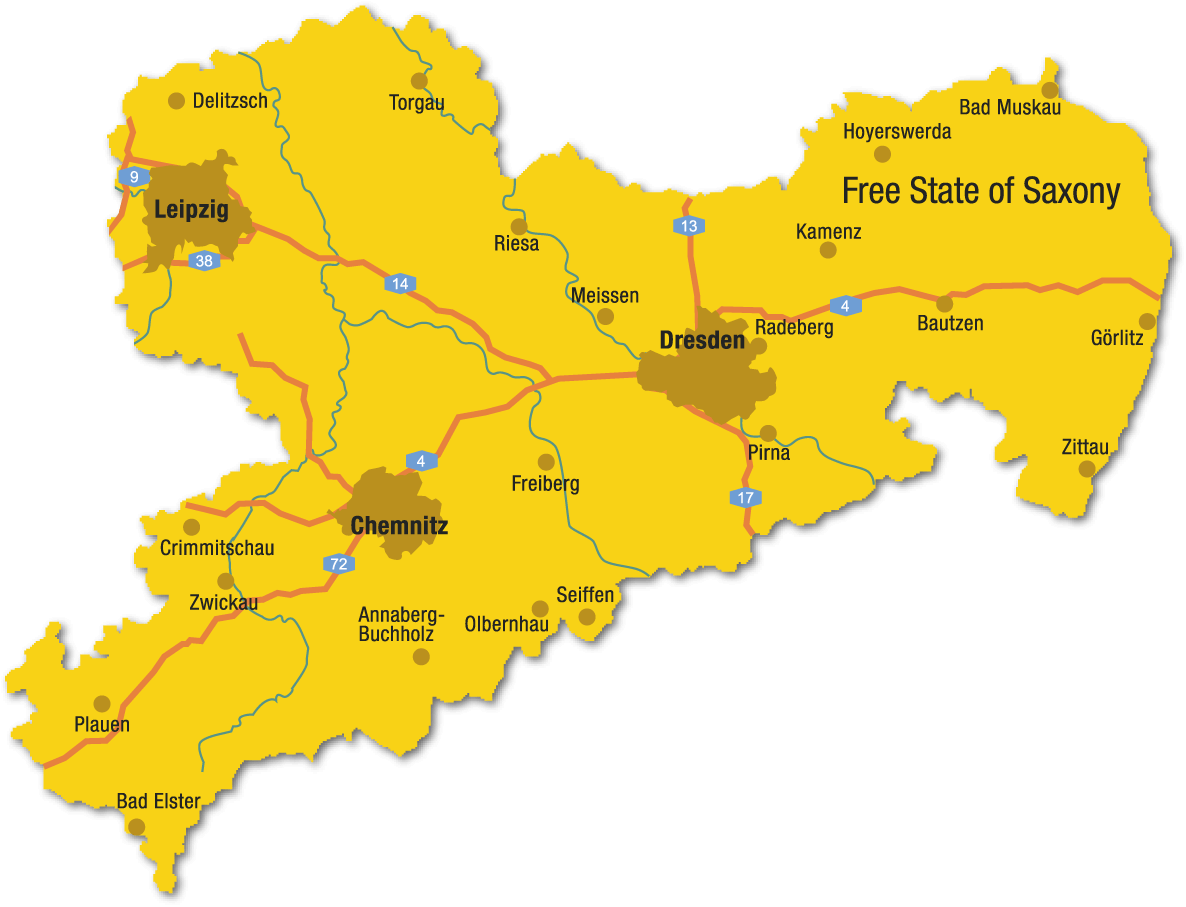Hunting horns sounding, dogs howling and horsemen galloping through the underbrush – the hunt is on. As in many other principalities, the forest in Saxony was the property of the sovereign and, therefore, all the animals therein.
Until today, hunting has been of particular attraction to many people – mainly because it provides the feeling of being very close to nature: the tranquility of the forest and the thrill of becoming one with flora and fauna. If one moves attentively and quietly, the tweeting of the birds becomes more diverse and the tracks become better discernable.
Lauenstein Castle (A)
Resting high on a rock spur, the castle watches over the town of Lauenstein below. It is a gem of Saxon Renaissance architecture. Around 1600, its builder, Guenther von Buenau, had a three-winged castle estate erected there, which has comprehensively been reconstructed and restored over the past three decades. Today, the main castle building accommodates the Eastern Ore Mountains Museum. An exhibition provides an insight into hunting in the Eastern Ore Mountains. One of its highlights is the falconry presenting a diverse programme throughout the year.
Further to Station B – Klippenstein Castle and Museum, approx. 54 km


Klippenstein Castle (B)
Klippenstein Castle was mentioned for the first time near the end of the 13th century and has witnessed an eventful history since then. In 1543, Duke Maurice had what was a castle back then converted into a hunting lodge. This is still proved by the princes’ stairs that allowed horsemen to ride up directly to the higher core castle. Duke Moritz staged large hunts there, for there was plenty of game in the extensive forests back then. In the second half of the 18th century, the castle was generally designed as it appears today. Since that time, the property has mainly been used as the official seat of the bailiwick.
Details on Klippenstein Museum and Castle
Further to Station C – Moritzburg Castle, approx. 28 km
Moritzburg Castle (C)
The fabulous moated castle situated in the vicinity of Dresden attracts visitors from near and far. Impressive hunts had been celebrated here by Elector Maurice already. Later, Augustus the Strong took it to extremes and turned hunting into exuberant festivities. The castle equipment is devoted to the topic of court hunting and shows many rooms with original leather tapestries. There are more than 70 red deer antlers in the dining hall, some of which are between 250 and 400 years old. It is therefore regarded to be one of the most important collections in the world. In the Hall of Monstrosities, abnormally changed antlers, including a 66-pointed specimen, can be admired. The collection in the Porcelain Quarter picks up the topic of hunting again.
During wintertime, an exhibition is on show on the castle premises about the cult movie of “Three Hazelnuts for Cinderella”.
Further to Station D – Augustusburg Castle, approx. 79 km


Augustusburg Castle (D)
As »The Crown of the Ore Mountains”, the castle estate is visible already from afar. Commissioned by Elector Augustus, “the Father”, and completed in 1572, it soon came to be used by the Saxon court as a hunting lodge. The Arms Collection provides some insight into the development of hunting weaponry from the 17th through the 20th centuries. The exhibition on game and birds focuses on the castle’s use back then as a hunting residence and, with the help of modern information systems and descriptive dioramas, deals with the animals in their habitat.
Details on Augustusburg Castle
